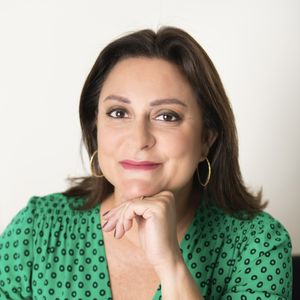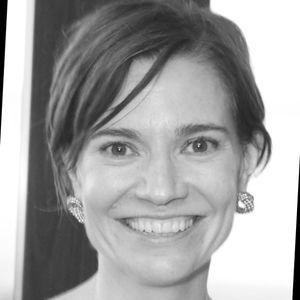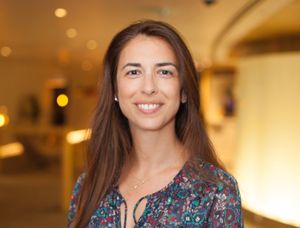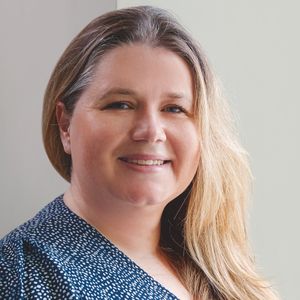The Current’s latest episode focuses on explaining the recommendations within EWEC’s Statement of Future Capacity Requirements 2023-2029: Summary Report and what they mean for Abu Dhabi’s future water and electricity capacity, as well as highlighting various activities and milestones over the past quarter.
Transcript
Abdulrehman Omar Bafaraj
[00:06 - 00:29] Hello, and welcome to The Current, a quarterly podcast brought to you by EWEC, the Emirates Water and Electricity Company. EWEC is a leading company in the integrated coordination of planning, purchasing, and supply of water and power across the UAE, dedicated to increasing the proportion of
[00:29 - 00:51] clean electricity and reducing the country's carbon footprint. Throughout the series, we are speaking to a range of energy experts within EWEC to discuss the company's success and innovations, offer market updates, and take a closer look into the efforts being made towards a more sustainable future.
[00:53 - 01:13] I am Abdur Rahman Ammar Bafaraj, Senior Project Manager at EWEC, and today we are going to be talking about EWEC's statement to future capacity requirements, including recommendations that will drive the diversification of Abu Dhabi's energy portfolio and how this will impact system operations.
[01:14 - 01:23] Joining me for today's discussion are my colleagues at EWEC. Dialing in remotely is Bruce Smith, Strategy and Planning Executive Director.
Bruce Smith
[01:24 - 01:25] Thank you, Abdur Rahman.
Abdulrehman Omar Bafaraj
[01:25 - 01:30] And with me in the studio is Mario Duarte, Operational Planning Director.
Mario Duarte
[01:30 - 01:32] Thank you, happy to be here.
Abdulrehman Omar Bafaraj
[01:32 - 01:39] Let's start by telling our listeners about your roles at EWEC. Bruce, if we can start with you.
Bruce Smith
[01:39 - 02:02] So the Strategy and Planning Directorate, if I start with the planning side of what we do, so we are responsible primarily for identifying how do we achieve our core strategic objectives of meeting the demand for power and water securely at least cost and hitting the government's mandated carbon targets, carbon reduction targets.
[02:03 - 02:27] So we have to figure out how to evolve the portfolio, how to develop the power and water portfolio by adding what type of capacity, at what scale and at what timing, as well as in what location in order to continue to hit those mandates. To do that, we are responsible for forecasting the demand for both power and water on an
[02:27 - 02:51] hourly basis over the next 15 years. And then we use that demand forecast as the basis for identifying how do we serve that demand for both power and water at the lowest possible cost. On top of planning the portfolio evolution, and that really results in the statement of future capacity requirements as it was known up until this year. But in addition to that, we are also providing support to our colleagues in the fuel and
[02:51 - 03:15] commercial teams because they're responsible for working out how much gas we need. So we need to know how much gas we're going to burn. And we're also helping them to identify whether trading opportunities with both internally with customers like AdNoc and EGA and internally other utilities like SEWA and EWE, whether
[03:15 - 03:40] deals to trade power and water make economic sense. And we're also supporting colleagues in finance when it comes to determining the BST tariffs and budget requirements. And we were also providing analysis to support asset management when we're looking at the financial viability of extending existing assets, perhaps in a reconfigured condition.
[03:40 - 04:06] So we'd look at whether or not that made sense. And for asset development, of course, we're providing the asset development team with the recommendations for what new capacity to build. So we are really a support function right across the business. And on top of that, the strategy piece, we're responsible for identifying what do we need to do as a business in order to achieve our long term strategic objectives.
[04:07 - 04:08] Thank you, Bruce. Mario?
Mario Duarte
[04:08 - 04:32] I'm responsible for the operational planning department inside of strategy and planning. And at its most basic, our responsibility is to be able to look at the operability of future capacity. So all these future capacity plans that are contained in the statement of future capacity requirements to be future system requirements, they have to be tested for operability and make sure that we identify any constraints or any issues that go along
[04:32 - 04:56] with that. But to be able to answer the question of operability, we also have to assess preferred locations. So that interfacing with Transco to figure out what's the preferred location for future capacity and the operational implications is a fundamental part of my responsibility. Another part, as Bruce mentioned, is the interface with the system operations department. And that is looking at supporting an operational readiness for
[04:56 - 05:18] the period plus one, plus two, plus three years. And that's also a responsibility of my department. So we produce every year an operability assessment to support the operations department anticipating what happens next. And then as you'll see in the statement, there is a section that dealing with future operability. And we'll be looking to expand on that every year as we go forward, as we
[05:18 - 05:26] get our methodologies and systems in place to be able to do that more routinely and more in a more sophisticated way. So that's a function that I fulfill in EWEC at the moment.
Abdulrehman Omar Bafaraj
[05:28 - 05:51] EWEC launched its statement of future capacity requirements summary report for the period of 2023-2029 earlier this year. The summary report is a study that supports EWEC in its decision making process when it comes to future project development and identifying what is needed to meet Abu Dhabi's
[05:51 - 06:13] future capacity requirements. The report is a key reference when it comes to forecasted water and electricity demand and provide us with a roadmap for investments in renewable energy and reverse osmosis desalination projects. You can download the full report from the link in the episode notes.
[06:14 - 06:18] Bruce, could you please tell us the top line recommendations from the report?
Bruce Smith
[06:19 - 06:40] OK, well, clearly we want to put as much solar energy into the system as possible. Solar is now the cheapest possible energy that we can add. And it also has the advantage of producing no carbon emissions. So given that EWEC has a mandate to deliver power and water at the lowest possible price
[06:41 - 07:04] securely and to hit a decarbonisation target, which is obviously net zero by 2050, but in the more immediate short term, we're aiming to provide 60 percent of all of our energy from clean energy. Now, at the moment, nuclear is providing around about 30, 35 percent with three reactors
[07:04 - 07:27] that'll peak at just over 40 percent of our total energy coming from nuclear. But as the demand continues to grow over the next 10 years or so, that proportion will fall. And by 2036, we're expecting the total energy that will be provided by solar to exceed the total energy provided by nuclear.
[07:28 - 07:52] On top of that, of course, we have to meet the shortfall in energy demand at night. So for that, we are anticipating the requirement for additional gas capacity to meet the underlying growth in demand of around 5 percent per year every year for the next 10 years at least. So gas will continue to play an important role in meeting nighttime demand from
[07:52 - 08:19] for energy that can't be served by solar, at least until the cost of storage technology falls somewhat. And on the water side, we are currently in the process of decoupling water production from power production by adding significant amounts of reverse osmosis capacity. We've already added and now commissioned the world's largest RO plant at Tuila.
[08:20 - 08:42] At 910,000 cubic meters, it is by some way the largest plant in the world, and that's expected to reach commercial operation by the end of this year. But on top of Tuila, there is also going to be additional RO at Shwehat, at Merfa and two smaller plants on Abu Dhabi Island.
[08:43 - 09:08] And that capacity will provide over 90 percent of the water demand from this membrane-based desalination by 2030. We're adding more gas capacity to replace the expiring – we've got about 10 gigawatts of expiring gas capacity by 2030. On top of that, we will need to add a further 6 gigawatts, so by 2035.
[09:09 - 09:30] So the overall picture is one of replacing the existing gas capacity as it expires with very flexible gas to turn on at night when the solar is not available and turn off in the morning as it becomes available. We're going to need to add a lot more solar, and we're going to continue with the decoupling
[09:30 - 09:46] of water production from power production, which at the moment has been largely coming from thermal desalination. But by 2030, we're anticipating 90 percent of our total water capacity coming from membrane-based reversal smices.
Abdulrehman Omar Bafaraj
[09:47 - 10:10] It's very helpful information to see the roadmap of AWIC. This information helped us as an asset development team to look into future site for solar, how we can build more solar into network, decouple thermal desalination, and adding more RO.
[10:10 - 10:25] It's a bit of a challenge to add more solar in terms of securing sites. With so much solar power in the pipeline, how are the system operations evolving to accommodate this new and intermediate energy source?
Bruce Smith
[10:26 - 10:50] What I didn't mention when I was talking about new capacity was the recommendation for batteries. And we are intending to hand over an RFP to go to market, or a business case hopefully will be approved by the Department of Energy this summer. I think at this point I'll hand over to Mario to explain what those batteries are for and
[10:50 - 10:57] why we need them, because they are not about shifting energy from solar to the night time period at this point anyway.
Mario Duarte
[10:57 - 11:20] It's also interesting to note that what we're doing with here is nothing that a lot of other operators around the world are also grappling with. The increase in the asynchronous generation basically means you're replacing the stuff that we're quite used to operating a system with, with generation that is not exactly the same kind of, maybe quality is not the right word, it's more focused on providing
[11:20 - 11:41] energy and not all the other supplementary or ancillary services that we're used to. And that means that we're going to have to try and procure those, source those, manage the system with far less of what we're used to on the system. You hear people talk about inertia for example, and inertia is quite fundamental here because inertia really means that when you have a power system, it carries on doing what it
[11:41 - 12:04] did before, so if you have a disturbance, a shock to the system, it just keeps on going. You add a lot of solar as we are intending to do, and that solar is asynchronous, which basically means it has no inertia behind it, you've got to find an alternative source. So it means your operators need to anticipate far better, they have to have far more sophisticated tools to be able to see what's coming down the road and be able to respond, and we're
[12:04 - 12:26] going to have to procure far more equipment that's going to be providing a lot of the reserves that we would have taken for granted in the past, and that's where the batteries come into. So it basically means the system is running with lower levels of inertia, which means the operators need to be far more vigilant, far more proactive, they're operating in a space they've never operated before, and that challenge is going to be ramping up into
[12:26 - 12:49] the future, so it's no mean feat for them, they're going to have to keep on getting more and more sophisticated and pushing the system to operate closer and closer and closer to the edge. The reality though is that with the amount of solar at any given hour, as that starts ramping up, you're also displacing conventional generation, and at the moment that conventional generation also produces water. So if you look at our plan for ramping up RO, that's fundamentally, you have to decouple,
[12:49 - 13:12] you have to get more and more water produced from RO sources to be able to limit the risk for secure supply for water. So all of it is integrated, it's one big compounded integrated system story we're trying to tell here, that it's not just one as a class in isolation, although it makes all perfect economic sense, it also means that there's a fine choreography on the technical front too. So you have to be far more explicit about what you need, when you need it, how much
[13:12 - 13:28] you need it, where you need it. And those are, I think, where it really gets quite interesting for the operators. So it's not an understatement to say it becomes quite a challenging space for the future and a very exciting job if anyone's looking for a job in that kind of space too. So it's really a lovely place to be if you're an engineer looking for a great challenge.
Abdulrehman Omar Bafaraj
[13:29 - 13:52] I agree with you. The more solar we need is that the more RO we need to build in again. I think we also need more flexible CCGTs to react all together toward an energy mix. I think the main question that we always been asked is, why don't we build a lot of solar?
[13:53 - 13:57] So how is EWEC ensuring a secure power supply during the night?
Mario Duarte
[13:58 - 14:22] Yeah, the reality is that you heard Bruce say earlier that a lot of the future capacity we're adding is also gas-based. So it'll be OCGTs and CCGTs, a fair amount of that capacity. So it's not disappearing. And that'll come to its own in the evenings. So you're gonna be seeing a lot more of the shifting between just pure nuclear, which is the base load for us. As of the commissioning of Unit 4, that's 5.6 gigawatts we'll have of nuclear.
[14:23 - 14:45] And then with the retirement of the old code generation, we're replacing with new CCGT dedicated CCGTs and OCGTs to produce just power alone more effectively and also to be dealing with, I think, a lot more cycling, a lot more cycling than we've seen in the past. So we want to ramp up and ramp down rapidly. So it's a different kind of gas generation we're looking at for the future.
[14:46 - 15:01] That remains our requirement. And then for those shoulder periods to deal with ramping and provide the kind of reserves that we require, there'll be batteries as well. And then you see the contribution of batteries also increasing over time as well, which Bruce mentioned going out to 2035.
Bruce Smith
[15:01 - 15:24] You touched on a key point. If you talk to most people, they don't regard solar as base load. They would see something like a nuclear plant or a coal plant in other jurisdictions or maybe a CCGT gas plant as being base load. But from an economics perspective, the concept of base load is that that particular plant
[15:24 - 15:48] provides you with the cheapest energy in your system. So you put as much of this cheap energy into your system to meet the base load. Our cheapest energy available to us today is solar. And in some places, even as close to us as Oman, wind power is also very cheap. So as we move into the future, the challenge we face is, well, we've got nuclear, we've
[15:48 - 16:13] got four nuclear reactors. But the challenge we're facing in planning today is, what is the roadmap? What is the route to net zero by 2050? And what additional capacity should we be adding to the system that's going to enable us to get to that net zero objective? And that's a difficult one, because the only guaranteed route to that today that we could
[16:13 - 16:35] say, yes, we can we can make sure that the power and water system produces no carbon is by building a lot of nuclear. And yet, if we do that, we are committed to a nuclear future that's going to be pretty expensive in comparison with the price that we're currently paying today, probably in the region of two and a half to three times more expensive than we're currently playing
[16:35 - 16:56] today. But what we're seeing is that the cost of solar has already fallen. It's about a fifth of the price of nuclear today. And what we're seeing is the price of battery storage and other storage technologies are also falling dramatically. And within the next 10 years, it's quite possible that storage plus PV will provide us with
[16:56 - 17:21] an alternative route to net zero. So we have the alternative of keeping the nuclear that we've got. Potentially, we could add more nuclear capacity, but there is no need to do that today. Instead, we can continue to add solar and then progressively we need to be adding battery storage or some form of energy storage to enable us to save the energy that's produced
[17:21 - 17:30] from solar during the day and discharge it or to dispatch it from those storage devices at night.
Abdulrehman Omar Bafaraj
[17:30 - 17:40] What about discussing wind or the small nuclear reactor, the SMRs? Would that give some flexibility to the network?
Mario Duarte
[17:40 - 18:04] Wind is, this is the thing about, if I just say the wind first, it's asynchronous generation. So although the prime mover would provide the energy is different, wind will be a solar, the way it gets to the grid is the same, goes through an inverter. So the effect is the same. So it doesn't really change the story very much. The modular reactors you're referring to just means you're dealing with smaller units.
[18:04 - 18:27] That's also quite useful because it means switching on, switching off, whether the folks would like to do that with nuclear is a different story. You're still going to be sitting with the challenge of nuclear contributing to base load, so not exactly the right kind of ideal either. In general, if you want to carry on operating as you always have in the past, then conventional generation is ideal. And if that's not the case, and I mean, you're trying to decarbonize the system after all,
[18:27 - 18:47] then you're going to have to be considering alternative energy sources that decarbonize the system. And that means you have to deal with the operability issues that come with it. It's just a reality. So like I said earlier, it's quite a challenging environment. It's quite exciting environment for power system engineers to be playing in, but also means we really are moving to a space where we don't quite know what the answer is just
[18:47 - 19:08] yet. And it's no different to power systems around the world. SOs around the world are grappling with exactly the same issue. Some are further along the path than we are, but I think it's quite unique, the environment you're in. Where we are in the UAE, it's quite unique, the kind of energy mix we have. The kind of industry structure is also quite unique, which gives us, I think, a very different
[19:08 - 19:32] kind of problem to solve than most. Ultimately, it comes down to technology decisions and how you go about solving the problem. So when you go to a control room, what kind of tools do you need to anticipate, predict, and becomes really analytical, really super analytical. Really, it becomes a nerd's paradise because you have to forecast what happens next. You have to anticipate. You have to really are really flying the seat of your pants at some times.
[19:32 - 19:53] You're ramping up, ramping down regularly during the day. You have to anticipate problems when something happens. How you respond to it, the time that you have to be able to respond is much less. So it becomes a very visceral, I think that's probably the right word if my English is correct there, really experience from it as an operator. So it's an exciting place to be nowadays, and it hasn't always been the case. In the past, it'd be pretty much you switch things on, you sit back and relax and wait
[19:53 - 19:56] for something to go wrong. So this is a different place altogether.
Bruce Smith
[19:56 - 20:19] Perhaps I could add a comment on the wind there. Most of you listening will know that the Abu Dhabi doesn't have the windiest of climates. I mean, we don't have a monsoon that hits us like, say, Oman, where the northwest corner of Oman there gets a regular blasting in the summer. But we are exploring with our colleagues in Masdar at the moment the potential for wind.
[20:20 - 20:40] There's around 100 megawatts of wind turbines that have now been developed on Sabanias and just south of Sabanias on the mainland. And this will give us a good insight into whether the new more efficient low wind speed wind turbines can actually supplement the solar energy that obviously we have a great
[20:40 - 21:00] resource for. So solar is great, but we know pretty well to the minute when the sun goes down and when the sun is coming up. So if wind can provide energy outside of some sunlight hours in a meaningful quantity that's cheaper than the alternative of, say, batteries to store the solar energy or gas fire generation
[21:00 - 21:24] plus some form of carbon abatement, then it could be that wind forms part of a useful complement to decarbonize the existing power generation portfolio. But I'm looking at this more from a technical and economic perspective. Mario's very much, I think it's fair to say you're addressing it from the engineering perspective. I am. So there are two things that need to go hand in hand and there's a natural iteration between
Mario Duarte
[21:24 - 21:46] this. Dead right. And Bruce, I think the structure you created does exactly that. Bruce has been promoting the idea of integrated planning for quite a while and this is exactly what we're doing. So by our very nature, our different functions, we are focused on operational planning, but doesn't mean to say it's divorced from considering the economics. And we iterate between the different teams within Bruce's directorate to be able to
[21:46 - 22:01] come up with the optimum outcome. So by definition, we should come up with something that is techno-economic when we have a plan for the future at the end of the day. So I think it's working quite well. I think, Bruce, the way in which we're interacting and I think there's a lot of work still to do. So there's a lot of set up still to be done.
Bruce Smith
[22:01 - 22:23] Yeah, I mean, Mario, you've come from iGrid and we're hoping to tap into the experience and the expertise that you developed. And as you mentioned, building the team, that's something that we've been working hard on over the last three years. And I think it's something that EWEC has been, we've been fortunate to have been given the opportunity and the mandate to actually build the teams that are basically responsible now
[22:23 - 22:37] for solving this problem. How do we run a system without burning any gas? And there are challenges on the gas operability side as well as on the power system itself that you're referring to. This is a complex problem.
Abdulrehman Omar Bafaraj
[22:37 - 23:02] It is. I think we have met a few of these banks. And when we approach the banks that there is a lot of solar projects coming in and then we reach to the point that we told them that how would they feel about investing in new CCGT. Some of the developers don't get the idea that in order to enable the system to reach
[23:03 - 23:24] the solar capacity that we require, we need to build gas-fired gas turbines to network, to stable the network. And again, as you said, to replace the old inefficient plants that we have. Let's shift the discussion toward the RO and the water right now.
[23:25 - 23:37] Mariu, could you tell us a little more about our progress in RO projects and how our efforts to decouple water and electricity generation are impacting system operations?
Mario Duarte
[23:38 - 23:58] From operability point of view, it's actually a good story. If you look at just say winter, if you're relying on cogeneration, you need to be running a certain amount of thermal machinery to be able to get an adequate amount of water out. As you decouple, you're starting to shift away from relying on cogeneration, which means
[23:58 - 24:20] that your part of water ratio becomes far more favorable to us, which means that we have less of a concern around water security supply, particularly at the low load periods like in winter. At the same time, the carbon intensity of RO is much, much less than running your cogeneration fleet. So you're decarbonizing at the same time. So from a security supply point of view, it's enhanced.
[24:20 - 24:41] And then of course, decarbonization, we're also going in the right direction there too. So it's a good new story. I think Bruce mentioned at the very beginning that we're looking to decarbonize quite a bit and there's quite a few RO plants that are in the pipeline, if you pardon the pun. And that I think we're looking at 90% of water produced from RO by 2030, if I remember the
[24:41 - 24:42] statistics, right Bruce?
Bruce Smith
[24:43 - 25:05] Yeah, I mean, we're going to have 90% of our water production coming from RO by 2030. Of the installed capacity, that will be about 70%. And as you mentioned, the carbon intensity will drop from around 11, 12 kilograms per cubic meter to less than one kilogram per cubic meter by 2030 with all that RO on the
[25:05 - 25:19] system. It's worth pointing out as well or highlighting that the carbon saving that comes from Tooele, that the new Tooele plant is more than the carbon savings coming from a single nuclear reactor.
Mario Duarte
[25:19 - 25:43] There's also the pragmatism as well. If you look at having, the moment you optimize power, you also have to optimize water. So there's always a balancing act. But as you start to decouple, you can optimize power separately and water separately. And there's a lot of benefit in that too. So that's just, I think, I don't want to put a figure on that, I think the financial benefit, but certainly there is a logistical benefit to be able to optimize things separately.
Abdulrehman Omar Bafaraj
[25:43 - 26:07] So Bruce, what does this expansion of low carbon intense RO entail from the project perspective? What do we have in the pipeline? I noticed that you mentioned M2, MRFA M2. I think the capacity is 120 million imperial gallon. We have Shoei HAT, S4, 70 MIGD, and then we have Abu Dhabi Islands RO with 100 MIGD.
[26:07 - 26:13] So how are these projects accelerating the decarbonization of our portfolio?
Bruce Smith
[26:14 - 26:36] You've listed the key projects there, Abdulrahman. At the beginning of 2020, we were producing about 15% of the total water that was being supplied to our customers from the RO capacity that at the time was MRFA and F1 and F2.
[26:36 - 26:59] So a total in 2019 of 127 million gallons. And since then, we've got Tooele coming in at 200 and the plants that you've just mentioned and adding another 120, 70, and 100 million gallons respectively. So add them all up and that represents about 70% of the total capacity that we'll have
[26:59 - 27:21] on the system. But as we said before, that 70% will be operated much more of the time than the remaining thermal capacity. So that 70% will provide 90% of all of our water demand by 2030. And that obviously has a lower carbon footprint. So we reduce the carbon intensity of water right down from 11, 12 kilograms per cubic
[27:21 - 27:43] meter to less than one. And it enables us to add more low carbon power generation into the system. So what we've seen happening is that from 2019, when the carbon intensity of power production was up at 330 grams per kilowatt hour, it was down to 230 last year, 2022.
[27:43 - 27:53] And we expect that to fall to in the region of 190 kilograms per kilowatt hour by 2030.
Abdulrehman Omar Bafaraj
[27:55 - 28:03] Bruce and Mario, thank you for joining us today and providing some interesting insights into EWEC strategy and planning.
Mario Duarte
[28:03 - 28:05] Thank you very much. Oh, thanks for having me.
Abdulrehman Omar Bafaraj
[28:07 - 28:27] Before we end, I would like to share a few of our achievements from this past quarter. EWEC issued a request for proposals to companies and consortiums interested in developing the new solar PV independent power project to be located in Al Ajban area of the Emirate
[28:27 - 28:53] of Abu Dhabi. Al Ajban solar PV project is a greenfield solar PV plant with a power generation capacity of 1.5 gigawatt AC. It will generate enough electricity to power approximately 160,000 homes across the UAE. Once commercially operational, it is expected to reduce Abu Dhabi's CO2 emissions by up to
[28:53 - 29:14] 2.4 million metric tons per year. EWEC also announced the award for its Merfetu reverse osmosis independent water project to a consortium consisting of Engie and Taka. The project's water purchase agreement, WPA, was signed between Taka, Engie and EWEC,
[29:14 - 29:39] followed by the financial close of the project. M2RO will desalinate seawater using RO technology to produce up to 120 million imperial gallons per day of water, which is approximately 550,000 cubic meters per day. EWEC and Abu Dhabi waste management company, Tadwir, announced the receipt of proposals
[29:39 - 30:04] for the development of the Greenfield Abu Dhabi Waste-to-Energy Independent Power Project. Proposals were received from a Japan-based consortium of Marubini Corporation, Hitachi Zusen Innova AG, and Japan Overseas Infrastructure Investment Corporation for Transport and Urban Development, and a consortium of Suez International,
[30:04 - 30:27] SAS, and PAL Cooling Holding LLC. Set to be one of the region's largest waste-to-energy facilities, the project will have an expected annual processing capacity of 900,000 tons of waste, enabling an expected carbon emissions reduction of 1.1 million tons per year.
[30:28 - 30:57] EWEC supplied the World Utilities Congress 2023 with clean energy for a second year, continuing the strategic partnership to support the event's sustainability initiative. As a clean energy partner, EWEC provided the World Utilities Congress with clean energy certificates, CECs, covering the energy used by the event. EWEC conducted its Q1 and Q2 2023
[30:57 - 31:22] auctions for CECs in Abu Dhabi. If you are looking to learn more about the CEC scheme, please make sure to listen to our episode about the clean energy certificates with our Commercial Executive Director Francois Brice, and Jasim Othman, Head of Commercial Operations and Relationship. Thank you for joining us for this episode of The Current, brought to you by
[31:22 - 31:35] EWEC. You can follow the show on your preferred podcast platform to keep up with our news and insights. I am Abdurrahman Omar Batharaj. Thank you for taking part in our journey.












